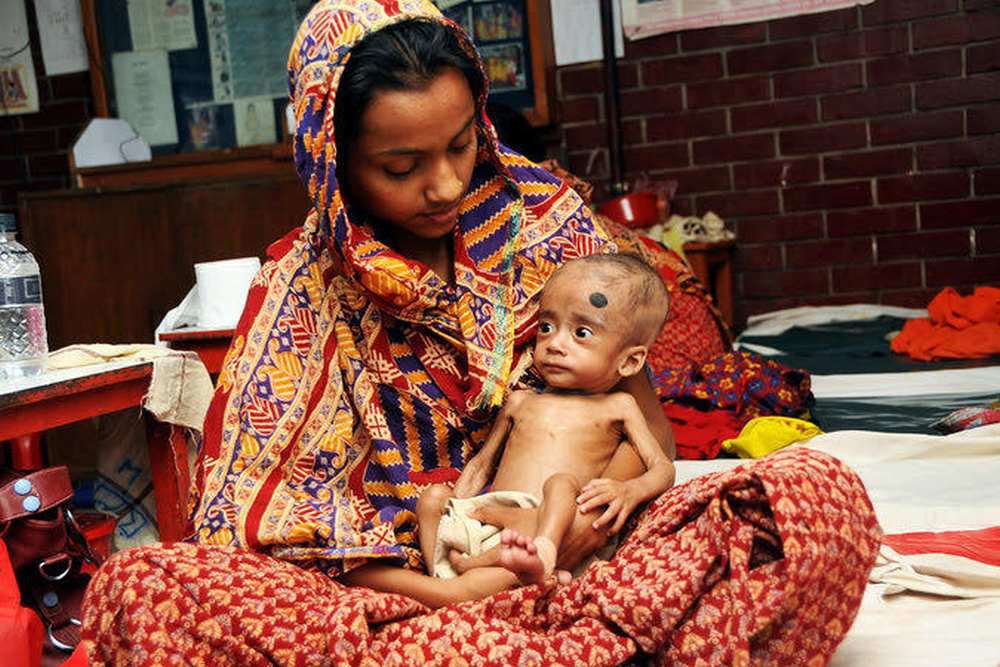Some shocking facts came to light after the Women and Child Development Ministry released a report in response to an RTI query. The report stated that over 33 lakh children in India are malnourished and more than half of them fall in the severely malnourished category. In such an alarming scenario, an initiative by IAS officer Heera Lal, AMD of National Health Mission, Uttar Pradesh, and former District Magistrate of Banda, is drawing attention as it aims to eradicate malnutrition. The officer spoke about this initiative called ‘Innovative Banda’ in a conversation with Indian Masterminds.
CAMPAIGN OBJECTIVE
According to Mr. Heera Lal, malnutrition is a hidden social problem due to the indirect and slow progression of its consequences. Both the system and the community do not consider it as a problem, and hence it’s not being prioritized. However, globally, investment in childhood nutrition is considered as one of the most cost-effective developmental interventions, and it has a long-term impact on individual, community, and nation’s overall development.
“If a child doesn’t receive the right kind of nutrients from its birth till five years of age, then it tends to form deformities and disabilities in its body as a result of malnutrition,” informed the officer.

INNOVATIVE BANDA
It was while he was posted in the Banda district in the Bundelkhand region of Uttar Pradesh that Mr. Heera Lal noticed that the area had high levels of childhood undernutrition. He immediately decided to tackle it and so started his ‘Innovative Banda’ initiative with several objectives in mind, which included changing the mindset of people towards malnourishment, strengthening District Health and ICDS systems for screening, prevention, and management of undernutrition in children, generating awareness among stakeholders, and creating capacities of the caregivers to improve child feeding and care practices.
BANDA SUPOSHAN KARYAKRAM
Accordingly, the administration of Banda listed the problem of malnutrition among the top three priorities of the district and collaborated with development partners like UNICEF and local NGOs to develop a comprehensive strategy and program for the prevention and management of childhood undernutrition.
After a thorough groundwork, a program called ‘Banda Suposhan Karyakram’ was rolled out in the district under the aegis of the ‘Poshan Abhiyaan’ scheme of the central government. Based on their height and weight, children were classified into a red and yellow category, depending upon the severity of malnutrition, and accordingly, they were taken care of.
“Our program involved the convergence of existing programs and service-delivery platforms by pooling existing government human resources, funds, inputs, programs, and opportunities. This was important from the point of sustainability and scalability. We roped in additional funds from various other resources like District Mining Fund, funds under Beti Bachao, Beti Padhao, and various untied funds under the health department,” Mr. Lal told Indian Masterminds.

PARTNERSHIP WITH UNICEF
The district administration also partnered with trusted development partners like UNICEF, local NGOs, and academic institutes for providing additional technical, knowledge, and programmatic support. Considering the multi-sectoral nature of nutrition, departments like the Panchayati Raj and Rural Development, National Rural Livelihood Mission, Social Welfare, etc. were also involved in the program.
NUTRITION REHABILITATION CENTRES
In Uttar Pradesh, there are dedicated health facilities now, referred to as Nutrition Rehabilitation Centres, to manage the Severely Acute Malnourished (SAM) children. These units are resource-intensive and can provide management to only about 1-2 percent of the district’s SAM caseload. Based on their medical complications, these children can also be managed at the community level using an outpatient treatment protocol.
“We designed an extensive outreach with a focus on involving local communities and improving their child feeding and care practices by bringing behavioral changes. Thus, Social Behavior Change Communication (SBCC) is the foundation of the overall program strategy.”

JAN ANDOLAN
One of the important strategic interventions under ‘Poshan Abhiyaan’ was to create a mass movement or ‘Jan Aandolan’ for nutrition. Evidently, for any significant changes at the population level, it is important to ensure universal coverage along with the optimal quality of services.
In order to reach the last child, to ensure universal coverage of seven essential services and greater community engagement under the program, the SBCC strategy was developed with the tagline, ‘Ab Har Bachha Suposhit’, which will not only prevent malnutrition but also manage it.
“A measurable increase in child nutrition levels and drastic improvement in reduction of malnourished children in the district give us confidence that we are on the right track to achieve our objectives. Also, validation from Niti Aayog and other institutes of prominence inspire us to move forward with more energy,” Mr. Lal said.
With the initial success, support, and encouragement, this noble initiative is set to gain more ground and achieve its targets in the days to come.

































